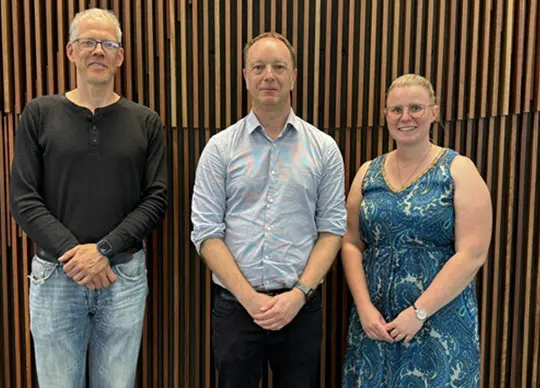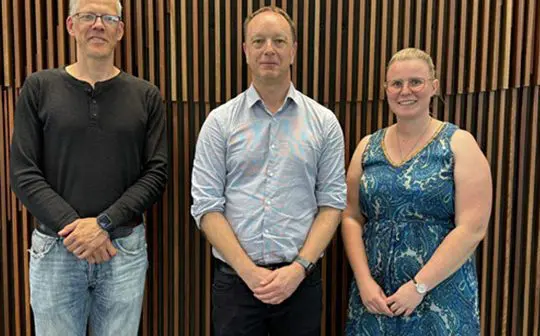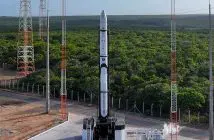
Launch vehicles will require scalable production of low weight and high strength structures and components that can withstand the extreme loads, vibrations and shocks of launch without failure.
Leveraging development underway in carbon composite technology to reduce satellite mass, the latest iLAuNCH Trailblazer project will apply the design flexibility and speed of additive manufacturing technology to develop large-scale carbon composite structures for rockets.
“This is another world class approach to lay up space-grade carbon-fibre and then digitally model that for scale and repeatable design,” said iLAuNCH Trailblazer Executive Director, Darin Lovett.
“As we make progress in developing sovereign capability for space applications, we know these products will also benefit defence, aerospace, and other sectors that require high-value, bespoke composite structures.”
This project will again utilise the design and advanced manufacture expertise of New Frontier Technologies (NFT) to create structures suitable for rocketry applications, along with the Australian National University’s (ANU) Australian Advanced Instrumentation Centre (AITC), and the X-ray Computed Tomography laboratory (CTLab) for testing.
Using an ANU high resolution CT scanner to assess and mature the manufacturing process the collaboration will build a functional digital twin of the rocket bodies to assess, qualify and enhance the fidelity of structural models for simulation.
“Our world class facilities, expertise in precision manufacturing and rigorous test and validation capabilities will help NFT mature and commercialise technology that will advance Australian manufacturing capability,” said the Australian National University’s Research School of Physics, Professor Patrick Kluth.
The application of x-ray computed tomography (CT) and 3D multiscale modelling at ANU will provide high-fidelity simulation. The CT will capture the detailed microstructure features, such as fibre alignment and voids, that can be reflected in the simulation models. 3D models will provide a detailed digital profile, with capability for performance simulation of every manufactured component, which is the foundation for digital certification.
The project lead, New Frontier Technologies has developed innovative design-for-manufacture (DfM) strategies for scalable, additive manufacturing of space-grade carbon-fibre structures using laser-assisted automated tape placement (ATP).
“This is the only ATP manufacturing capability of its kind in Australia and has been proven in European (ESA) projects for manufacture of high-performance composite structures for space applications,” said New Frontier Technologies Director and CEO, Paul Compston.
By joining forces, iLAuNCH, ANU and NFT will develop a qualified manufacturing process that will directly contribute to the development of rocket manufacturing in Australia through the optimisation of automated additive manufacturing technologies.





